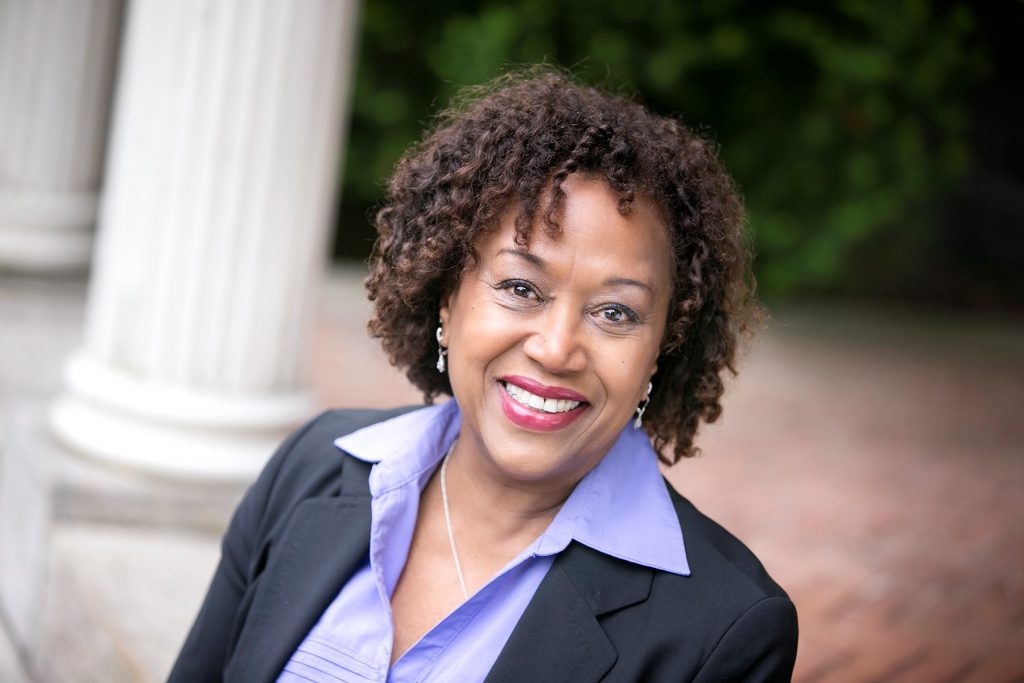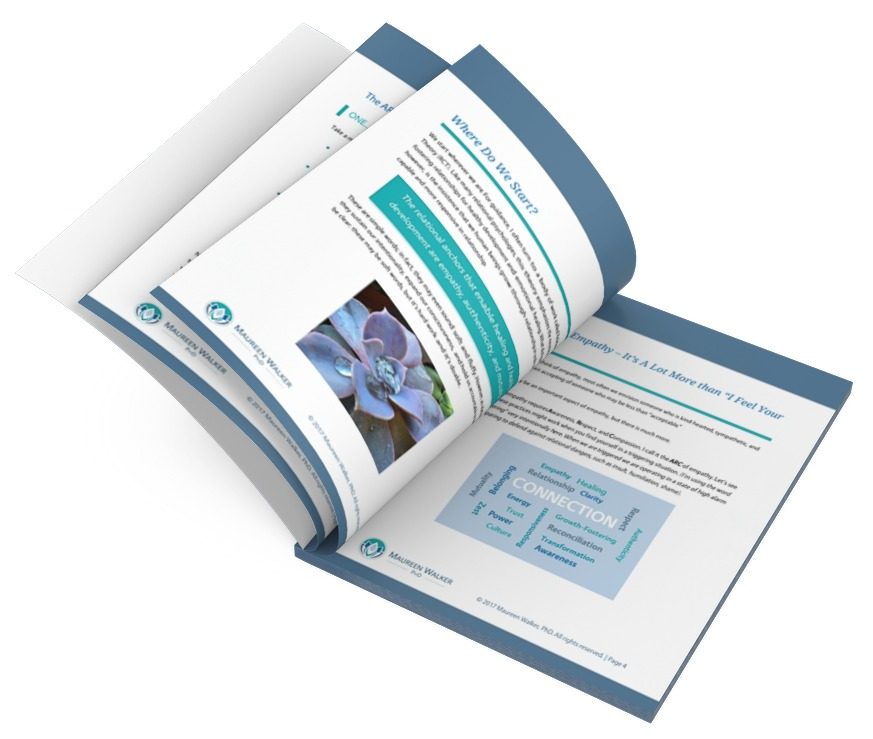Just a few weeks ago, we were all pulled into yet another heartbreaking headline about the senseless death of an Australian woman, killed by a person who had been sworn to serve and protect her. It has been almost 20 years since unarmed Amadou Diallo was shot 41 times by police. Since that time, but there have been far too many such headlines. Although the circumstances preceding and aftermath of each has been different, they are all symptomatic of the dangerously divisive cultural climate in which we live. I will say more about the similarities and differences later. For now, I will say that all of these deaths remind me of something my mother used to say whenever she encountered a particularly vexatious person or situation. She would say “it’s enough to make me lose my religion”.
I always found that expression to be a laughable bit of hyperbole, because for my mother, religion was not just a Sunday-go-to-meeting thing. Religion was not something she could “lose” or easily set aside. For her, religion was a way of walking through life guided by values such as generosity, belief in communal dignity, and a sure knowledge that no earthly powers could delimit the true measure of her human worth. She wasn’t particularly big on pietistic spectacle; in fact, she was rather impatient with it. For her, religion meant no separation between believing and doing: it was her way of walking and breathing through everyday life.
In these vexing times, I’ve come to see that “losing one’s religion” is more than a bit of hyperbole. When I say religion, I’m not talking primarily about the stuff of sectarian traditions, however sacred those beliefs may be. I’m talking about those anchoring values that help us when the only choice seems to be between wrong and wrong. They are the core beliefs that guide us even when we must make the uneasy choice between right and right. In this sense, religion is a constellation of the values, beliefs, and presumptions embedded in our identity narratives. We enact those narratives on an everyday basis as expressions of who we think we are, who we think we can be, and who we think we should be in the world. These narratives are not personalized, privately held abstractions; they function to delimit the parameters of community and relationship, and they have real consequences. In the best of times, our narratives may function as a kind of moral compass guiding us toward one another to cultivate and promote the common good. However, in these politically fractious times, they may become rigid and dualistic, creating a society peopled by Us and Them. Once established, these categories become the justifying means for determining who belongs, who is worthy, and who deserves access to the goods of a civil society, whether that be education, information, health care, or justice. In other words, in these vexing times, our narratives can cause us to lose sight of how to live a more fully human life in this world that we share.
What’s Happening Now?
The signs of these times are all around us, nowhere more woefully displayed than in our collective reactions to the far too many police shootings of just the past half-decade. (We could go back farther into history, but why do that when current events provide so much data?) When Australian-born Justine Ruszcyk was tragically killed by a thrice-reprimanded Somali-born police officer, the outcry was clamorous, the calls for retribution swift. Within days the police chief resigned and the mayor was forced to defend her fitness for office. That was a bit unusual. Typically after a shooting, there is a media race to expose the ugly underbelly of the victim’s life. You know the kind: selling loose ciggies or bootleg CD’s in the street, “mouthing off” at the police, fleeing from a back-piercing hail of bullets. Curiously, no such narrative evolved about this victim. This time, the portrait that emerged from media was of a woman who embraced life with exuberance. She was known to rescue ducklings from sewers, and according to her friends and neighbors, she was as likely to call out to them with “Beautiful!” as she was to call them by name. We were reminded that she was a bride-to-be; it seems that she took her fiancé’s last name before they were married, and the media made it clear that her life – their lives – mattered. The senselessness of her death was made ever clearer when her lawyer described her as “the most innocent of victims”. Interestingly, this was the same lawyer who represented the family of Philando Castile, an African American man was also a victim of a police shooting. Minutes after Mr. Castile was killed, media stories surfaced about his past and probable legal infractions, including the fact that he smoked weed.
At this point, one must ask: if she could be proclaimed the “most innocent of victims”, who then would the” least innocent” of victims? What in fact does it mean to be a somewhat “less innocent” victim? Do these people deserve to die? Do their lives matter? As it turns out, the word “innocent” has been deeply racialized throughout the history of this nation. It shows up in 19th century psychiatric manuals that describe runaway slaves as having mental disorders, being given to “insensibility” of the nerves and lethargy of the mind, prone to creating disturbances, and destroying masters’ property. In fact, no less a luminary than Carl Jung was troubled by the possibility that the white race could be degraded by living in close proximity to “Negroes”, whose moral development he believed was a “whole historical layer less” than that of the white man. The dehumanization – the demonization of black bodies is a hallowed tenet in the idolatry of white supremacy.
The Wages of Idolatry
The idolatry of white supremacy is as real today as it was two centuries ago. Albeit often unconscious, it is not inconsequential. It shows up in the Georgetown Law Center study in which 325 adults perceived black girls as needing less nurturing and less protection than white girls. Perhaps the idolatry of white supremacy was at play when a white police officer forcefully straddled a 16-year-old black girl, thrusting his knees into her neck and back while repeatedly slamming her face into the ground. Similar research indicates that black boys are perceived to be older than they are (4.5 years on average) and more dangerous. Perhaps that explains why the police officer who rolled out of his car and killed 12-year-old Tamir Rice was exonerated by the justice system. Perhaps it was this idolatry that caused Eric Garner’s last gasps for air to fall on deaf ears. Perhaps is what caused former police officer Darren Wilson to rationalize his killing of unarmed Michael Brown by describing him as a “demon”. Maybe it was this idolatry that caused a Texas woman (presumably a good citizen herself) to opine that all the outcry about the dragging death of a disabled black man was nonsense since “he wasn’t no good citizen”.
So long as the idolatry of white supremacy holds a vise-like grip on the American soul (however implicit that bias may be), victimhood will be racialized and rank ordered. The “most innocent” will be dutifully mourned, and something that passes for justice meted out. Those who are deemed “less innocent” may be mourned, but perhaps with an asterisk – typically in the form of media stories signaling that their worth has been compromised by some misdeed or perhaps just the ever-looming specter of criminality. In any case, justice is measured differently when lives matter less.
It may be tempting to think that the idolatry of white supremacy is a white skin problem only. That would just be wrong – I mean really wrong. First, not every person with white skin is held in thrall to its tenets. Even though their legacies are often buried in footnotes, we have a deep history of white-skinned people who have sacrificed life and limb to dismantle soul-scarring structures of white supremacy. Second, racialized hierarchies depend for their force and effect on the collusion and participation of people of every hue and ethnicity. As disheartened as I am by cultural narratives that would elevate Ms. Ruszcyk’s life over that of Mr. Castile’s, I am equally dismayed by the narratives that invoke what Richard Rohr calls “scared violence” – violence that feels “righteous and justified” as a response to past and/ or present injustices. In other words, the idolatry of sacred violence confers entitlement to retribution, however misdirected it may be.
We have all seen the headlines like these: “Black people don’t give a F* about Justine”. In some cases, the story goes on to explain the justifiable outrage to the different responses to the two deaths. The officer who killed Castile in front of his girlfriend and four-year-old daughter was acquitted. So were the officers who killed John Crawford, Tamir Rice, Eric Garner, Timothy Russell, Malissa Williams – the list can go on and on. Clearly this litany of moral atrocities should evoke outrage and protest. Clearly this kind of outrage and protest may prompt us to “talk among ourselves” and seek spiritual and emotional sanctuary among people we might call Us. However, the headlines declaring that “black people don’t care” seem to promote moral nihilism: to advocate for righteous retribution against Them as a palliative for past and present suffering. Outrage is then used as justification for fortifying the walls that disconnect Us from Them. Overly indulged, outrage easily devolves into what has been called “redemptive violence”. Of course, there is nothing redemptive about violence, be it physical, emotional, or spiritual. What violence produces is generation after generation after generation of soul wounds, and all too often, the abdication of moral agency. White supremacy and so-called redemptive violence are twin idolatries that breed chronic disconnection and unremitting human suffering. They rip the soul out of a nation, strip us of human agency, and leave us unmoored in the moral turbulence of these vexing times. To succumb to the false promises of either is to lose our “religion”, and neither nihilism nor patriotic pietism will save us.
So, What’s Next?
Of course, it is entirely human to be reactive. Our brains are hard-wired to recognize and react to threat – that’s how we’ve managed to inhabit this planet thus far. It makes absolute sense for us to be repulsed – even heartbroken by the machinations of people with too much power and too little conscience. But then the question becomes, what next?
We have the potential, individually and collectively, to be guided by something more fully true than our immediate reactions. We do not have to “lose our religion”. We can cultivate the kind of life-affirming responsiveness that allows us to live and grow together. Let me suggest three practices.
First, we must face our wounds. As much as I want to armor myself with “knowing” – with prescience even – this past year has been heartbreaking for me. I like to say wasn’t surprised by rancid, racialized hatred that was so readily available for exploitation. I must also lean into the reality that it breaks my heart. I am not alone in this. In fact, I believe that much of the ugliness we are living in terms of racism, xenophobia, transphobia is pouring out of broken hearts: people who have been taught that they are nobody unless they can be better than and have more power than somebody else. If we are to become “one nation indivisible”, we must acknowledge the deep moral scars that run through our history: confiscation of land, chattel slavery, as well as the exclusion, internment, or annihilation of anyone relegated to the category of Other – or more precisely Not Us. Bombastic sloganeering only deepens these wounds. A case in point: until we come to terms with another more sobering narrative, “Make America Great Again” is but an empty tale, full of “sound and fury”. That other narrative, as Langston Hughes most memorably penned it insists that: “America never was America to me”.
Second, although we are witnessing “deplorable” behavior (and maybe indulging in a bit of it ourselves) we must do more than deplore. Author and Benedictine nun Joan Chittister calls us to do the work of a public intellectual. This work has nothing to do with numerous degrees or institutional bona fides – in fact having such certification might hold us back from our calling. Being a public intellectual means being willing to speak up – uninvited. We must take notice when it may be easier to avert our eyes. We must become adept at noticing when something crazy or outright evil passes for normal. Then the job is thinking, teaching, interrogating – asking that unwelcome question. As Chittister put it, we must provide a vision of possibility and a philosophy of plausibility. For example, can we expand our definition of pro-life to mean providing consistent care for a child born with cystic fibrosis? Clearly, the role public intellectual is not for anyone who wants to win a popularity contest, but it also doesn’t require any of us to be brash, humorless, or endlessly annoying. In fact, that’s precisely why those of us who seek the moral “high ground” need good-hearted allies and antagonists: they keep us grounded in humility.
That brings us to the third practice: we must be willing to enter into “good conflict” with each other. As my mentor Jean Baker Miller taught, conflict is inevitable and necessary in growth-fostering relationships. If conflict is a human “given”, what’s next? When we affirm the reality of shared humanity, conflict need not devolve into combat. Here is the difference between good conflict and combat. Typically, we brace for conflict. We shore up our defenses and listen just long enough to pull out the appropriate counterpoint and drive it home. Might we imagine instead softening for conflict- shedding our defensive armor in hopes of learning something instead of protecting old answers? When we have the courage to relinquish old idolatries, we might find ourselves emerging together in brave new spaces where true transformation can happen.
In these brave new spaces, there are no either-or answers. We can meet heart to heart and voice to voice. People do it every day. Neighbors of different political stripes show kindness to each other. We can even manage to practice traffic civility with cars that sport those “disagreeable” bumper stickers (however we might define disagreeable). Every little personal action helps in some way, but not enough. Because structural injustice may degrade even the most well-intentioned generosity, we must also engage our responsibility as agents of structural change. And while it is true that structural change without relational conversion may simply plaster over soul-scarring cultural wounds, that does not absolve us of our responsibility as shapers of moral possibility.
The gift of these times is that our spirits are rankled. We are being nudged out of our numbness enough to notice and to speak some disquieting truths. We must acknowledge that courageous women and men put on blue uniforms to serve and protect every day. Their lives matter and we owe them a debt of appreciation. We must also acknowledge that the policing and brutalization of brown and black bodies has always generated economic profit, political gain, and for some, social supremacy. If we are learning anything from the narratives created around deaths of Philando Castile and Justine Ruszcyk, it is that we must let go of the illusory security the old idolatries give us. And when we do, we can live the creed we profess to believe: that all lives matter.



